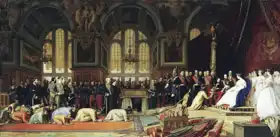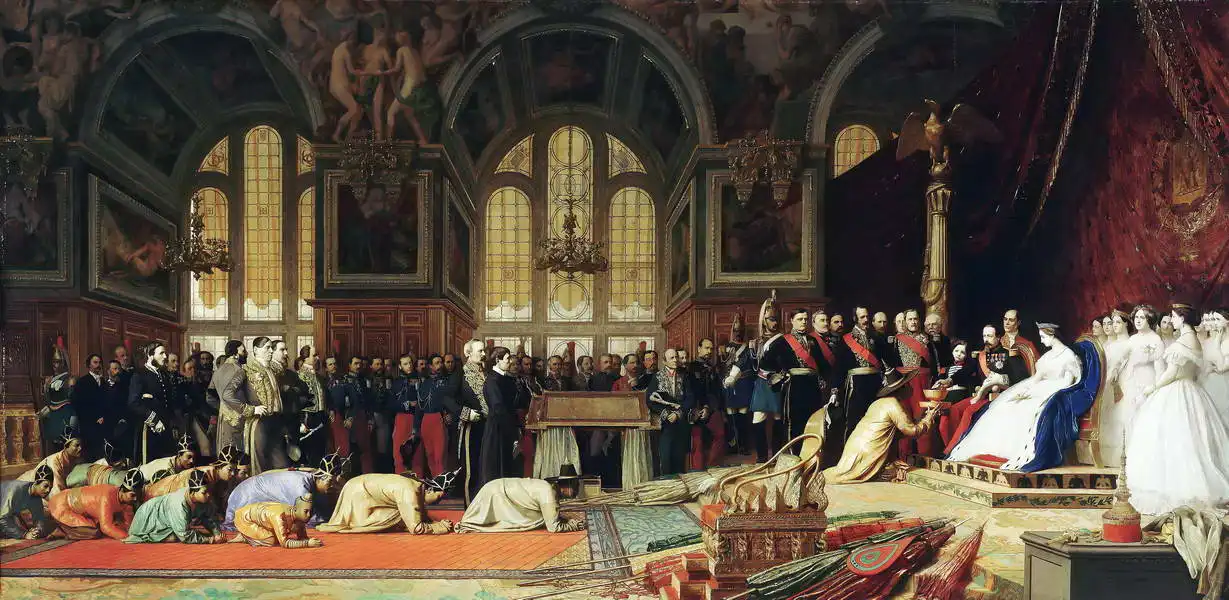About this finishing
Print. The image is printed on the top quality 10-ink HP Z9PS printer on HP matte 270 g / m2 paper. You can choose any size to an accuracy of 1 cm. A margin of 5 cm around the image is added to the size of the motif.


You can find a detailed description about our finishings
here.
Accept Siamese Ambassadors Napoleon III.
Date:
1864The painting depicts a festive scene with many people in historical costumes inside a richly decorated room. Some of the figures are dressed in military uniforms, while others are in elegant dresses. The scene is dominated by a group of people sitting and standing in the foreground of the painting. On the right is a group of women dressed in wedding dresses with a queen-like figure sitting on a throne. To the left of center is a man kneeling and holding his hands forward as if preparing to hand over or receive something important.
This description was created by artificial intelligence, please be indulgent.
Gérôme painted picture Accept Siamese Ambassadors Napoleon III. in 1864. Prevailing color of this fine art print is vivid and its shape is long. This image is printed on demand - you can choose material, size and finishing.
Jean-Léon Gérôme (18-1904) was a French
Classicist painter. He studied in France, Italy and the Vatican, and then worked in the studio of Charles Gleyre. His painting
Cockfight won 3rd place at the exhibition in 1847. He began to acquire commissions and could travel throughout Europe and seek inspiration. In 1852, along with other artists, he painted for Napoleon III great historical works. Four years later, he travelled through North Africa and created a series of paintings with Arab religious themes and scenes -
Wailing Wall. In the Netherlands, he captured soldiers trampling beds of tulips in an attempt to stabilize the tulip market in the so-called
The Tulip Folly. He was promoted to an officer and elected an honorary member of the British Royal Academy. He received the Order of the Red Eagle, third class, from Prussian King Wilhelm I and was invited to the opening of the Suez Canal. On January 10th, 1904, he was found dead in his studio in front of a portrait of
Rembrandt and buried in the cemetery of Montmartre.


